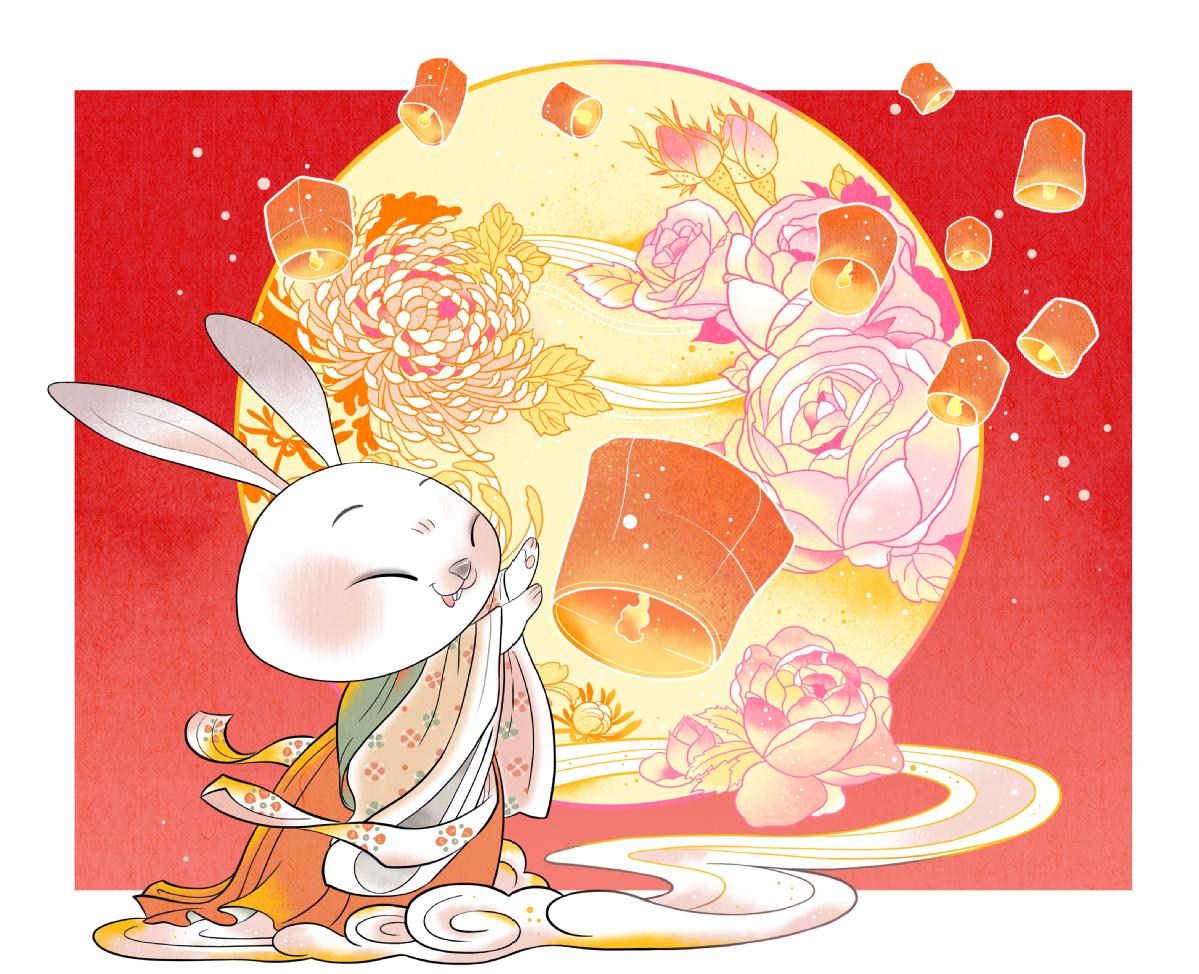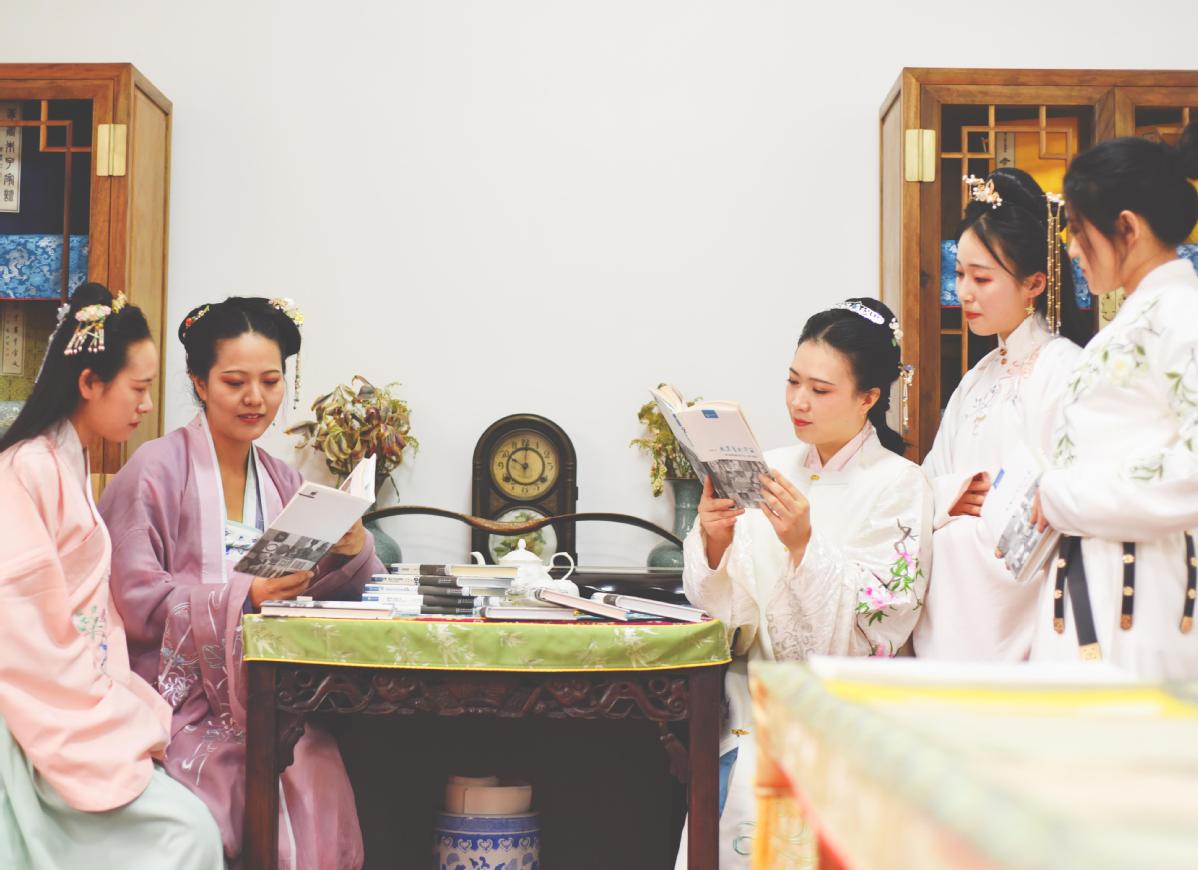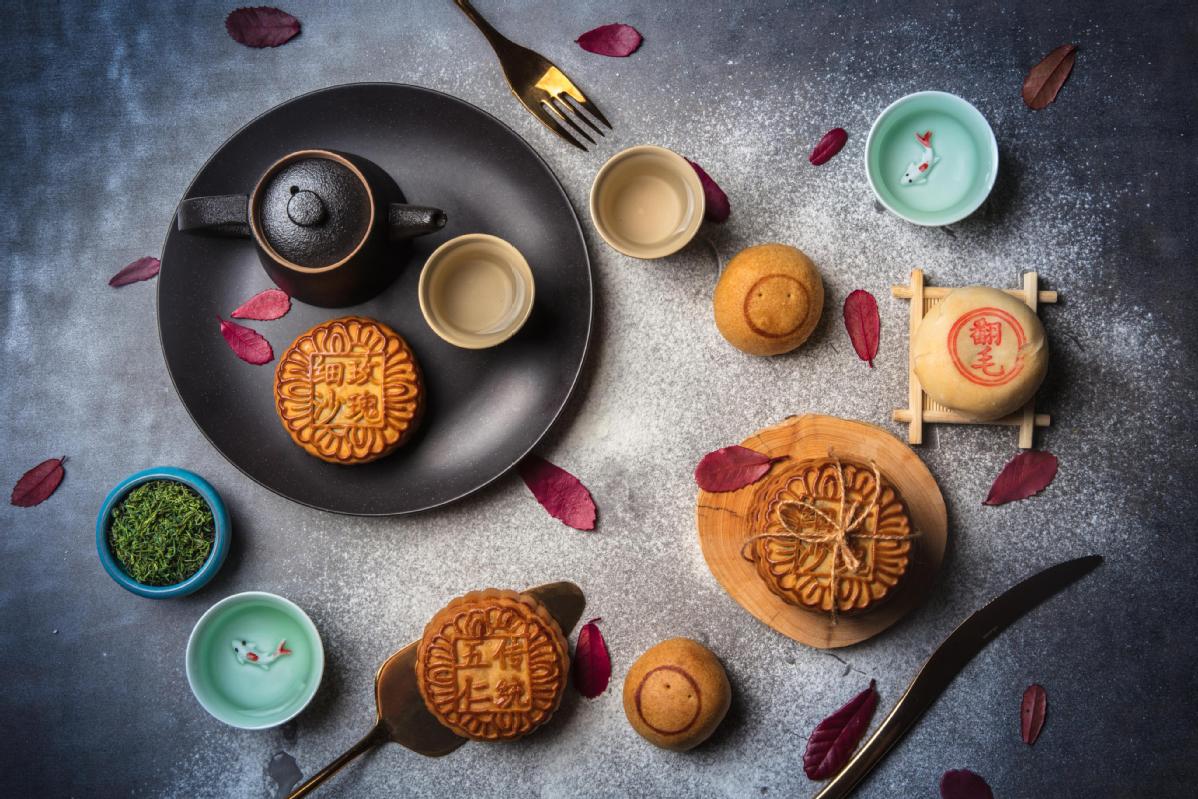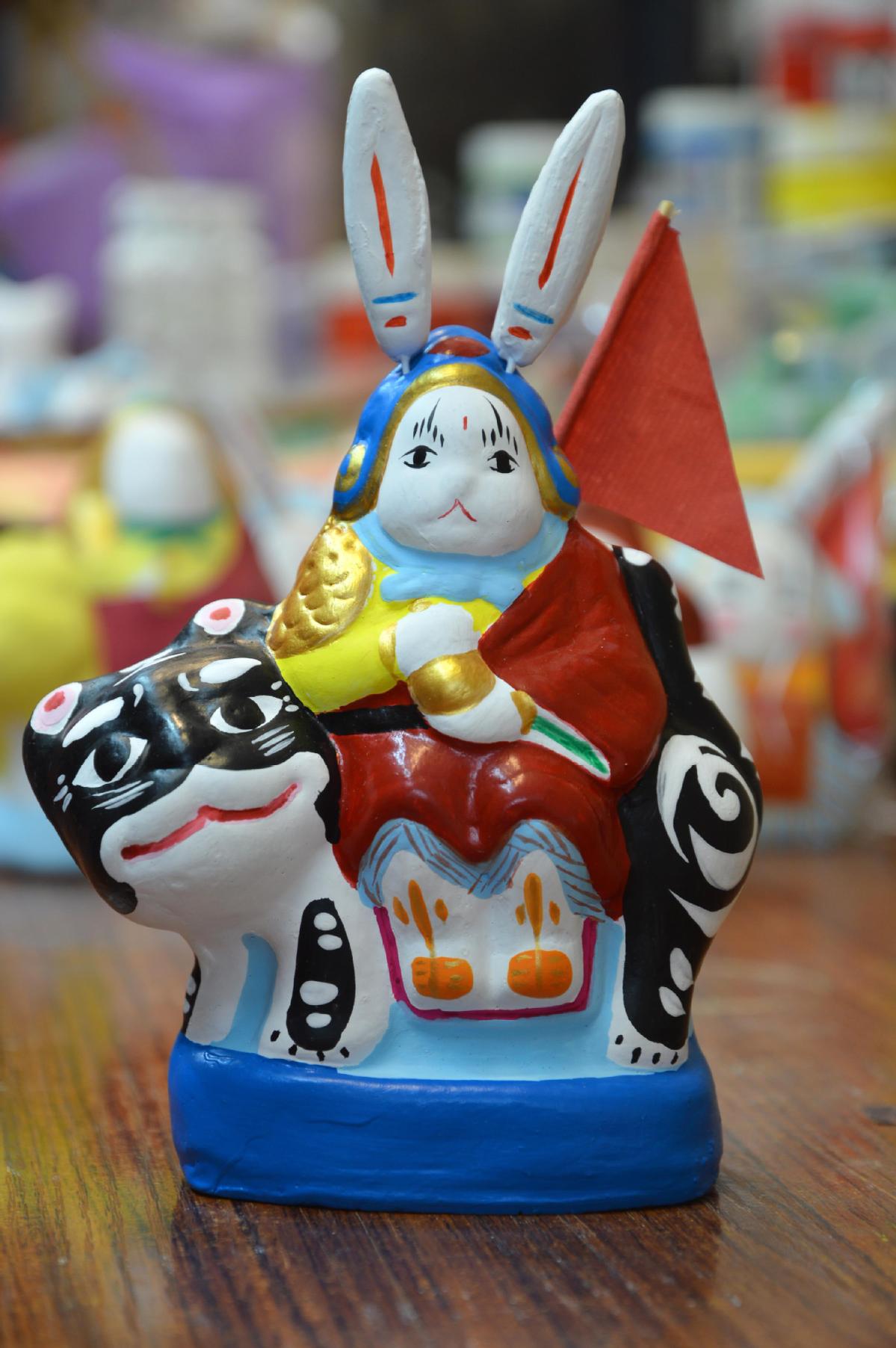An Ode To The Moon

Mid-Autumn Festival is a time when Chinese families embrace folk customs, Xu Lin reports.
Celebrated on the 15th day of the eighth lunar month, Mid-Autumn Festival-which falls on Sept 13 this year-is an occasion where Chinese people traditionally hold family reunions, enjoy mooncakes and marvel at the beauty of the large, round moon.
While folk customs differ from region to region, people across China like to celebrate the festival in their own way and pass on the festival spirit to the next generation.
Li Baoqi, pastry chef of Hua's Restaurant in Beijing, was busy teaching guests and their children how to make traditional Beijing-style fanmao (rolling feather) mooncakes ahead of the festival.
It's a pastry that was enjoyed by emperors at banquets during the Qing Dynasty (1644-1911). Legend has it that Empress Dowager Cixi once pounded the table with her hand, causing the crust to "flutter" like feathers.
Packed with chopped walnuts and peanuts, each mooncake weighs 250 grams and has a white surface with a red stamp bearing an auspicious motif made of strawberry jam. Li says in order to cater to healthier dining habits, they reduced the amount of sugar and added more nuts. They started to sell fanmao mooncakes in 2014 to revive the ancient recipe. All ingredients are meticulously made by hand.
"Children have great fun at these events and learn a lot about the festival," says Yue Jingyan, who took her two daughters to the restaurant to learn how to make mooncakes.
In the past, children in Beijing offered mooncakes, fruit and flowers to Tu'er Ye, or the Rabbit God, on the night of Mid-Autumn Festival. In modern times, the 400-year-old Rabbit God has gradually become a toy for children to play with during the festival, which is both a symbol of Beijing's folk culture and a tourism souvenir.
With a suit of armor, the god with the head of a rabbit and a human body is often seen riding on a tiger, an elephant or a deer, or even sitting on a lotus leaf-which all have different auspicious meanings. Legend has it that the Rabbit God is the incarnation of Jade Rabbit that lives in a palace on the moon with the mythological goddess, Chang'e.

Women dress in hanfu robes at a reading event held by the Beijing Mowu Tianxia Hanfu Association in December. CHINA DAILY
Traditional culture
In Lao She's novel Four Generations Under One Roof about the life of Beijing residents during the War of Resistance Against Japanese Aggression (1931-45), an old man bought two Rabbit God statues for his grandchildren from a street vendor for Mid-Autumn Festival.
Lao She writes: "The small rabbit is indeed exquisitely made, with its smooth, pink face and delicate features. Even a 75-year-old man can't help loving it, just like a child."
Zhang Zhongqiang, 57, is an inheritor of the intangible cultural heritage of making Rabbit God models in Beijing's Xicheng district.
"It's the best time for craftspeople, as the government is striving to revive traditional culture," he says.
"To understand the culture of Beijing, you have to delve into the history of the Rabbit God and try to make one yourself. For instance, in the Beijing dialect, there are some two-part allegorical sayings related to the Rabbit God."
Zhang sticks to the old method of making Rabbit God figurines, but also designs new versions that cater to modern aesthetics and younger people.
He says the variety of figurines has risen from five to more than 30, and the most common costumes are gold, red, yellow and green.
He teaches a course at a primary school in the city's Daxing district that combines making the figurines with classes on Beijing's culture, history and folk customs.
First, he presses pottery clay into a mold to form the shape before leaving it to dry for a week. He then polishes it and paints it white. The last step is to paint the different colors on the semifinished product, a process popular with locals and tourists alike.

Mooncakes are usually the centerpiece of the Mid-Autumn Festival celebrations. CHINA DAILY
He recalls a moment when he visited Taiwan on a cultural exchange several years ago, a man in his 90s who was originally from Beijing, burst into tears as childhood memories of his toy rabbit flooded back.
It's a long tradition for Chinese people to enjoy colorful lanterns out on the streets with their families during Spring Festival, Lantern Festival and Mid-Autumn Festival.
Cao Zhenrong, 75, from Nanjing, Jiangsu province, has been making Qinhuai lanterns since he was a child, learning the skills from his father. His calloused hands bear witness to his lantern-making career, and he's a provincial-level inheritor of the intangible cultural heritage.
Originating in Nanjing some 1,700 years ago, Qinhuai lanterns usually take the shape of flowers, birds, fish and other animals.
"The most difficult lanterns to make are the ones shaped like humans, as it takes a great deal of time and energy to re-create vivid facial expressions," he says.
He says he's glad that more people are becoming interested in Qinhuai lantern culture. He teaches different age groups to make lanterns, from kindergarten children to university students.
There are three steps to follow while making them: use thin strips of bamboo to form a frame, paste thin paper over it and then add decoration.
He has no time to observe Mid-Autumn Festival with his family since it's a busy time for craftspeople. The Imperial Examination Museum of China in Nanjing has invited him to teach parents and children to make lanterns. "Cute rabbit lanterns are popular during the festival."

A typical Tu'er Ye figurine has the Rabbit God riding on a tiger. YUAN YITING/FOR CHINA DAILY
Reviving old festivities
For lovers of hanfu, or traditional Chinese costume, Mid-Autumn Festival, together with other traditional festivals, are occasions to dress up in their favorite outfits and have a gettogether to revive old festivities.
Yu Mengting, president of the Beijing Mowu Tianxia Hanfu Association, says the group meets to make mooncakes and lanterns, hold a ceremony to honor the moon, enjoy guqin (seven-stringed lyre) performances, take turns to recite poems and play pitch-pot games.
She says in ancient times, Chinese people attached great importance to etiquette and made strict rules for the types of clothes worn on different occasions. Just as hanfu has been revived in recent years, other elements of traditional culture like incense have also been promoted.
"Hanfu and traditional festivals complement each other. We love hanfu as well as traditional culture, and we like to discover how ancient people celebrated their festivals," she says.
Yu says public awareness about hanfu has been greatly increased over the past decade.
"Passers-by will rarely size you up curiously when you wear hanfu now. It also means we're more confident about our culture," she says.
"Hanfu has become an integral part of my life. It's stylish, and I often match it with my modern clothes."
The average age of the members of her association is 26. They often hold activities in museums, parks or shopping malls to promote hanfu culture among the public.
Thanks to mobile internet, people often share short videos of their celebrations online, particularly in the Chaoshan area in Guangdong province.
For those working away from home, short videos about local operas or temple fairs often help to ease feelings of homesickness.
Last year, Zhang Tao started to post the traditional customs of the Chaoshan area on the short video platform Kuaishou, and now has over 100,000 fans.
"It's about recording my life and sharing it with people who share the same hobby," says Zhang Tao, a businessman from Shantou city in the same area.
"In Chaoshan, it's a tradition to build a pagoda-shaped kiln and burn it on the night of Mid-Autumn Festival to celebrate the harvest and pray for blessings. Locals gather to watch the ceremony, watch the moon and burn offerings, which I also film and post online."

No comments:
Post a Comment